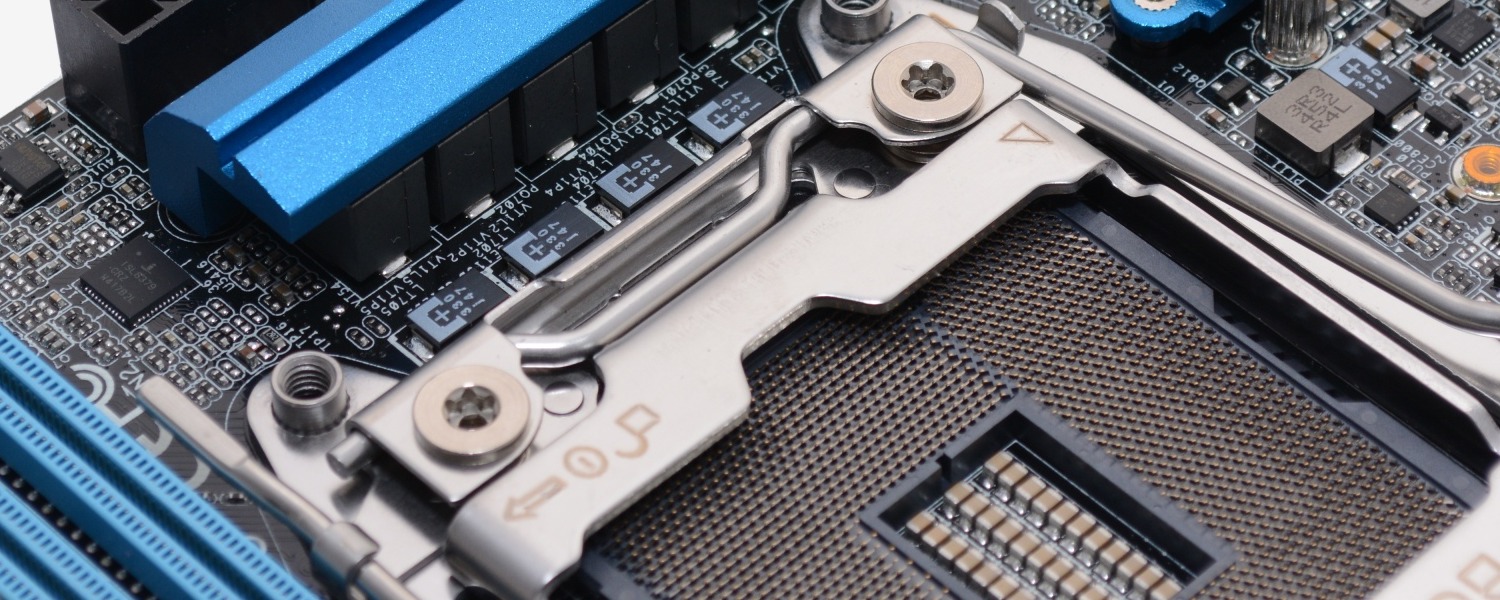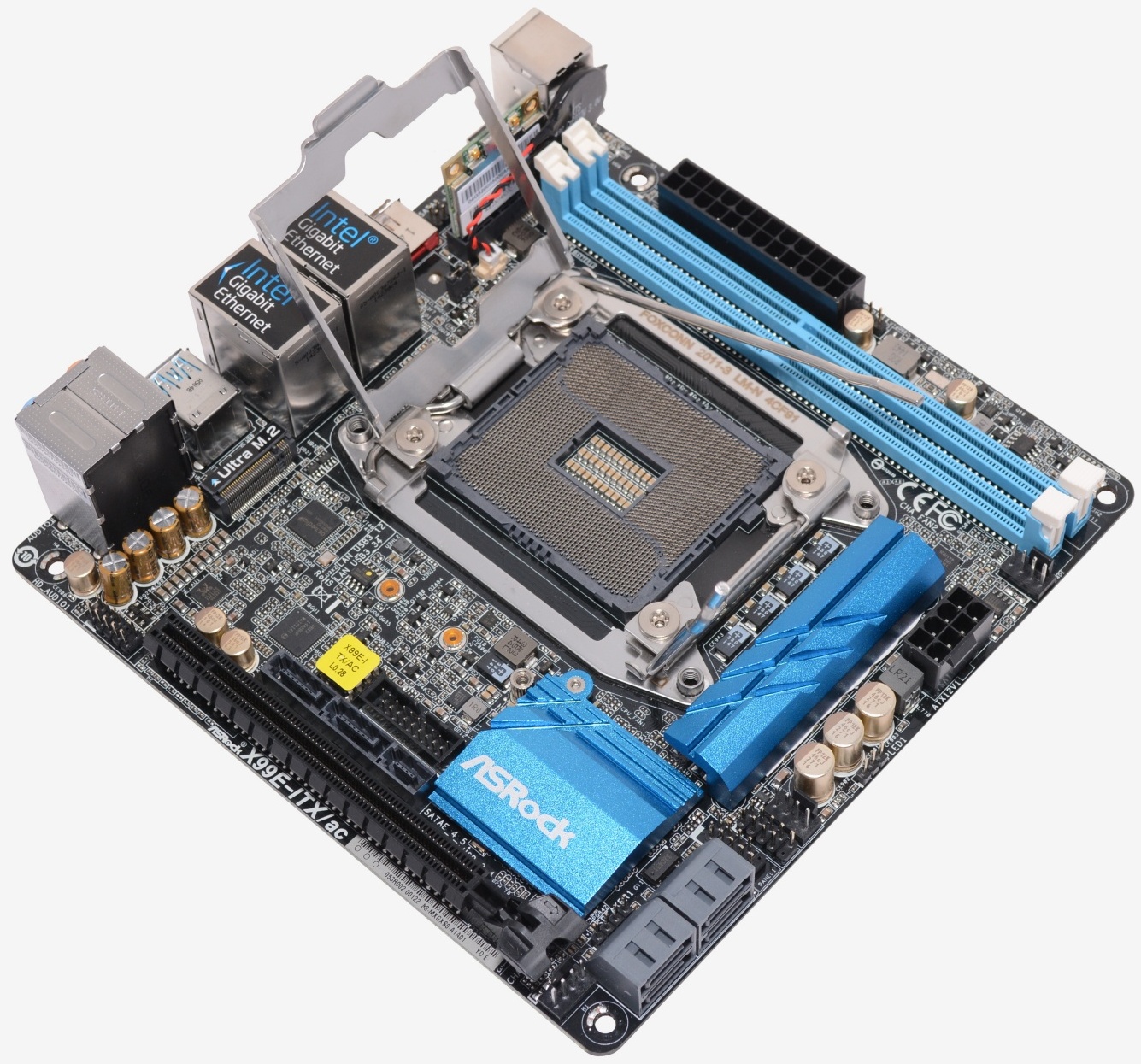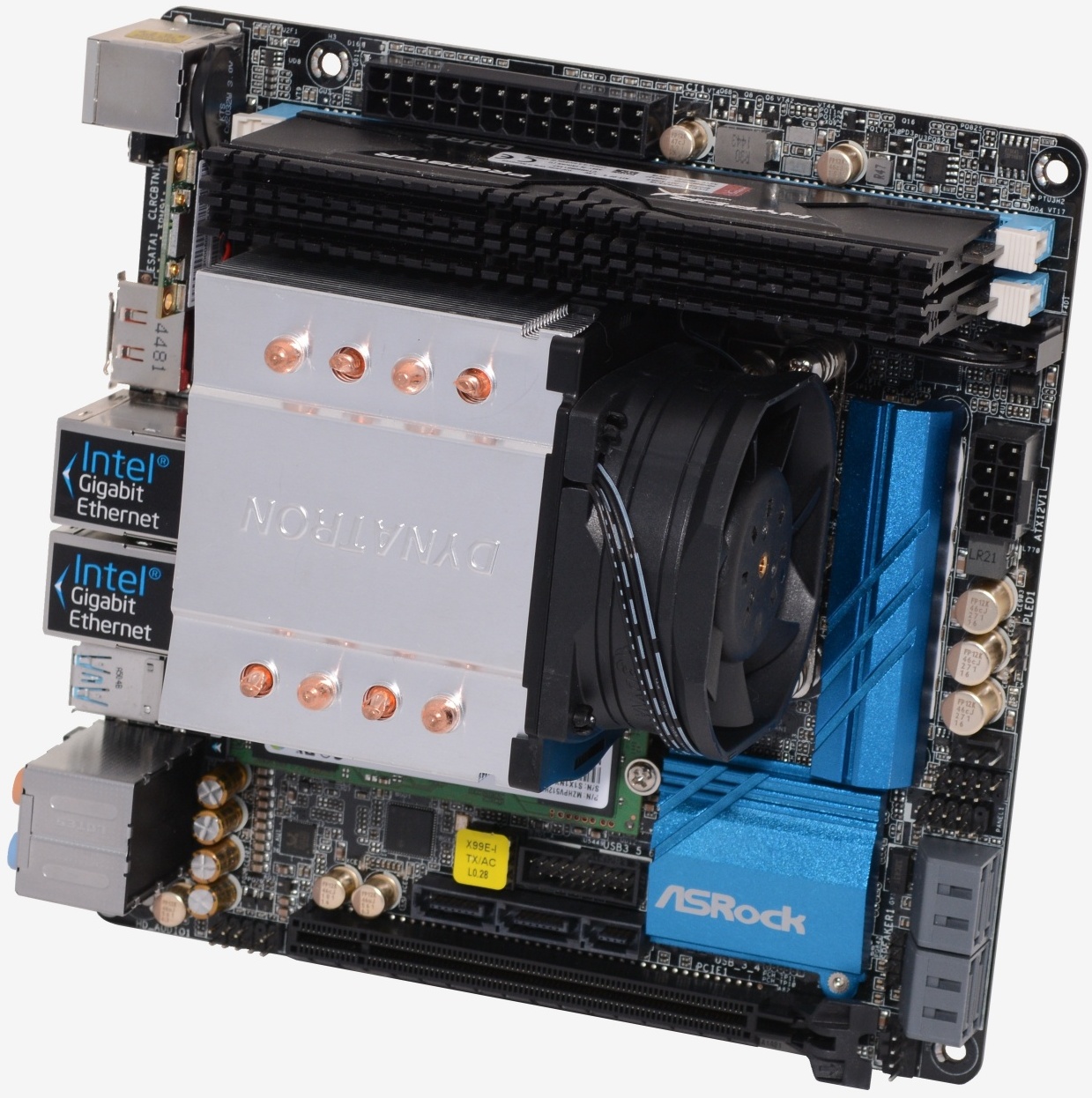Board Layout & Design
It goes without saying but we will anyway because we still can't quite believe it: as a Mini-ITX motherboard the Asrock X99E-ITX/ac measures just 170mm x 170mm. This is remarkable given the standard square ILM LGA2011-3 socket measures 90mm x 90mm and would occupy almost 30% of the available space on the X99E-ITX/ac.
Being so tight on space, Asrock opted to use the narrow ILM LGA2011-3 socket, making it slightly longer but much thinner at 100mm x 75mm which takes up roughly 26% of the board's space.
Because the socket isn't standard, the mounting spots are off so almost no after-market LGA2011-3 coolers will work with the X99E-ITX/ac. The solution was obvious: employ a server-grade narrow ILM CPU cooler.
Not wanting to limit their customers to air cooling, Asrock went one step further and included a custom water cooling mounting plate that is compatible with Cooler Master's Seldom 120V Plus/120V closed loop CPU liquid coolers.
As you might expect, not everything is perfectly placed on the X99E-ITX/ac, but the board's layout is ideal for the most part. The 24-pin power connector is at up top and this worked well for our build. The 8-pin CPU power connector is on the opposite side of the board toward the I/O panel and being that it is right on the edge we have no trouble reaching it.
The two DIMM slots are placed snug against the CPU socket, but this doesn't cause any problems when using memory with over-sized heatspreaders such as the Kingston DDR4 Predator memory that we used.
There are four 90-degree mounted SATA ports in the bottom right corner of the board just above the PCI Express x16 slot. They are easy enough to access here, even with a long graphics card installed. The SATA Express connector is a little more difficult to access as it is mounted in a central location above the PCI Express slot.
The underside of the board features a few chips but nothing noteworthy. There aren't any hidden mSATA or M.2 slots here either.
The I/O panel carries just two USB 2.0 ports, a legacy PS/2 port, CMOS reset switch, eSATA port, four USB 3.0 ports, two USB 3.1 Type-A ports, two RJ-45 network connectors and five audio jacks with a S/PDIF port.






